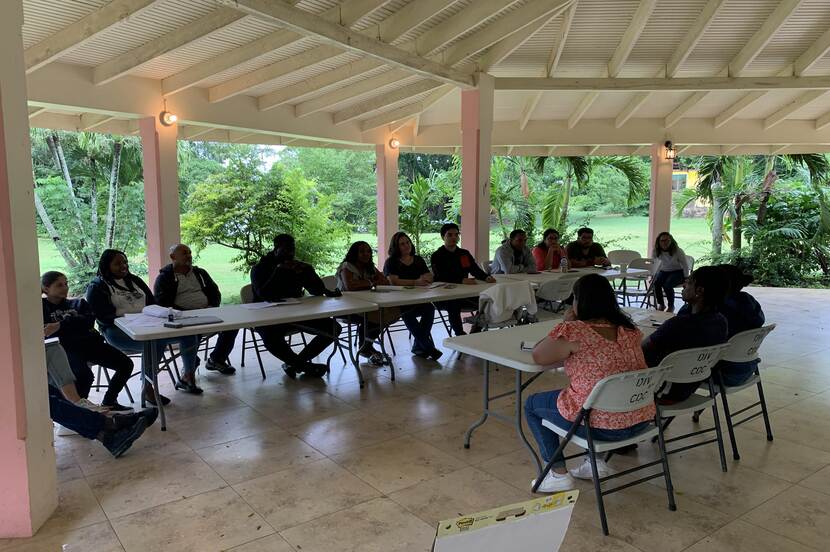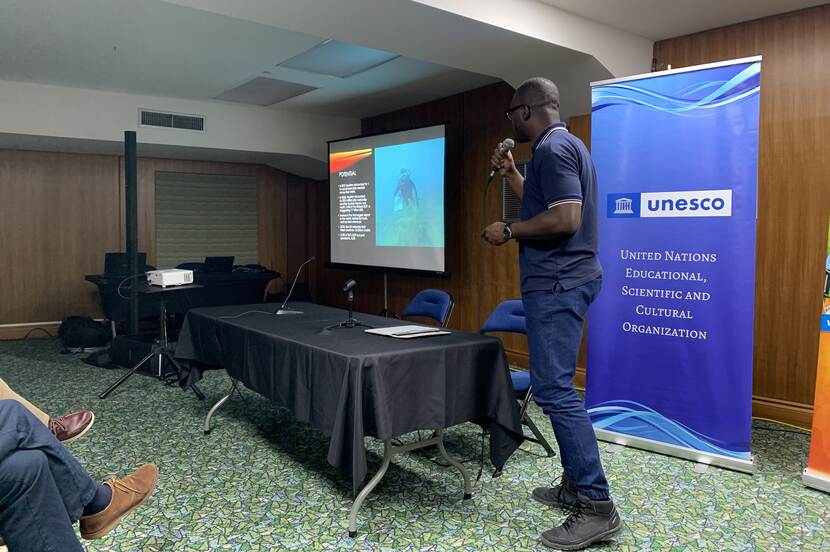Final update on the UNESCO Foundation Course in Tobago
Weblog
After three fantastic weeks, the UNESCO Foundation Course on Underwater Cultural Heritage Management in Tobago has come to an end. After diving on the wreck of the Dutch Admiralty ship Huis te Kruiningen, students were tasked to come up with a significance assessment and a management plan of the wreck site, to give a public presentation during the final ceremony and to give a poster presentation of the site in a larger context of the past, present and future. It was amazing to see how determined the students were to finish their task in time and with good quality!
The final day started with a role play session, discussing the possible development of Scarborough harbour to be able to house more cruise ships. Divided into groups with different roles - local citizens, Trinidad House of Assembly (THA), constructors, environmental and heritage foundations – an intense discussion arose. The students delved deep into the subject by discussing economic growth, environmental impact and the sustainability of the present community with their own habits and culture. This role play session was set up to give the students a role they will normally not have, but which is the role of stakeholders they do often talk with. We believe that this creates a better understanding of different positions.


Looking forward
The posters of the course and the work the students undertook, will be visible in the library of Scarborough. The management plans will be handed over to THA. Now, trainers and students are on their way home, with more knowledge, with new colleagues and friends and hopefully with a bond that will help them carrying out the work that is waiting for each of them in their own country. The protection of the underwater cultural heritage is important and can only be a joint responsibility. We can now say to the countries involved: Aruba, Curacao, Honduras, Costa Rica, Jamaica, Guatemala, Colombia, Mexico, Suriname, Panama and Trinidad & Tobago: capacity is available. Make use of these archaeologists and cultural heritage managers as much as you can. They can make a difference!
TTT - Trinidad and Tobago Television - has aired an interview with two students of the course. You can watch the interview on Youtube.
A big thanks to Chris Underwood, my fellow trainer in the course for all his efforts, wisdom and friendship! Thanks to UNESCO for being able to organise this all under their flag and for assisting the students to come to Tobago. And thanks to THA and the people of Tobago, for making this an unforgettable experience.
The need for capacity building
The training was financed and coordinated through the International Heritage Cooperation programme and the International Maritime Programme of the Cultural Heritage Agency of the Netherlands (RCE), a full body of the Ministry of Education, Culture and Science. We see lack of capacity in underwater cultural heritage management as a serious threat in the preservation of this valuable resource. As this training again shows, this can be easily overcome. By joining several countries together in this training, not only capacity is built, but also a platform to cooperate in the region. In the end, it is also (former) maritime nations with shipwrecks in many places in the world – like the Netherlands - that profit from well trained, informed and experienced partners from coastal states. This is why we invest!
